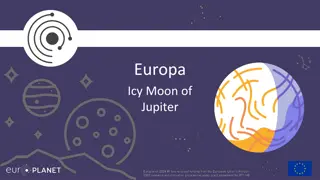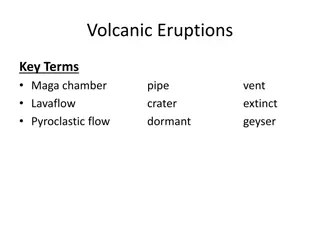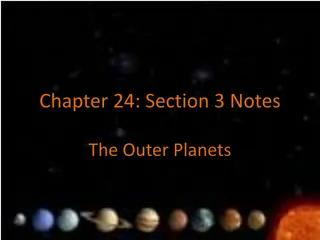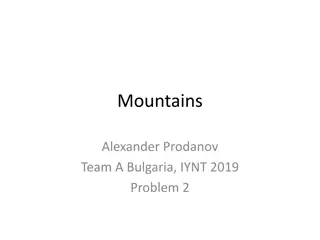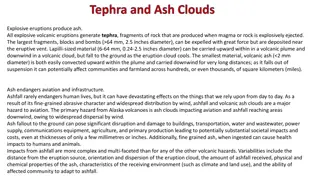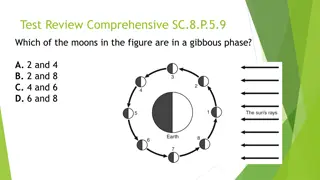Io The Volcanic moon of Jupiter
Io, the volcanic moon of Jupiter, is a geologically active object in our solar system with over 400 active volcanoes and unique volcanic hot spots. The thin atmosphere of Io allows eruptions to form large plumes, with lava of various colors due to different sulfur types. Tidal heating, caused by gravitational stresses from Jupiter and its moons, leads to Io's intense volcanic activity and distinctive features like massive lava flows and sulfur plumes. Learn about the gravitational effects and tidal heating that make Io a fascinating celestial body.
Download Presentation

Please find below an Image/Link to download the presentation.
The content on the website is provided AS IS for your information and personal use only. It may not be sold, licensed, or shared on other websites without obtaining consent from the author.If you encounter any issues during the download, it is possible that the publisher has removed the file from their server.
You are allowed to download the files provided on this website for personal or commercial use, subject to the condition that they are used lawfully. All files are the property of their respective owners.
The content on the website is provided AS IS for your information and personal use only. It may not be sold, licensed, or shared on other websites without obtaining consent from the author.
E N D
Presentation Transcript
What's the difference Compared to earth, Io has 150 to 300 volcanic hot spots and 400 active volcanos, Earth has 1,500 of which 600 are active. Usually earths volcanos erupts and stays somewhat contained by atmospheric forces, on Io with its extremely thin atmosphere it erupts into a large plume; The largest reaching around 620 miles.
What's so great about Io It is the most geologically active object in our solar system. The Lava can be many colors from red to yellow or green etc. due to different types of sulfur. All of this activity is caused by tidal heating (extreme stresses by gravitational pull of jupiter and its fellow moons.)
The Lava of Io In 1997, a major eruption on io produced more than 1,400 square miles of Lava. Io s Lava is mostly composed of consisting mostly of basalt silicate lavas with either mafic or ultramafic (magnesium-rich) compositions. The large plumes that are produced consist of sulfur, sulfur dioxide gas and silicate pyroclastic material (like ash).
Tidal Heating Io s has over 400 volcanos on its surface, but what is causing this planet to be the most geologically active object in our solar system? Tidal Heating- The heating of the interior of one planetary body caused by stresses from the gravitational pull of another
The Gravitational Effects Io is the closest moon to Jupiter and if it were the only moon of Jupiter it would not suffer tidal heating, however since it is in-between Jupiter and its 3 other moons they have a gravitational tug of war with Io. Jupiter could fit 1,300 earths inside its volume or 318 times its mass.
Tides created From Tidal Heating This pull creates a tide on Io, this can cause its surface to rise and fall as much as 300 ft. (Tides on earth go about 60 ft.) This is an enormous strain on Io and causes heating inside Io s core, and creates the intense volcanos we see on its surface.
Ios Atmosphere thin atmosphere average surface temperature ~100K released gas condenses back onto the surface as frost made up primarily of sulfur dioxide gas
Composition surrounded by a cloud of sodium, potassium, and oxygen atoms ????? Sodium????????? ( ) chlorine recently discovered sodium chloride (table salt)
Io Plasma Torus Io's volcanoes spew out huge amounts of particles into space Swept up by Jupiter's magnetic field ionized in the magnetic field creates a track around Io's orbit
Electrical Current Between Io & Jupiter 2 trillion watts of power is generated creates lightning in the upper atmosphere
Works Cited "Io's Color." Io's Color. N.p., n.d. Web. 30 Jan. 2014. http://www.mmedia.is/~bjj/3dtest/io "Solar System Exploration: Planets: Jupiter: Moons: Io: Overview." Solar System Exploration: Planets: Jupiter: Moons: Io: Overview. N.p., n.d. Web. 30 Jan. 2014. "Io." Jupiter Moon. N.p., n.d. Web. 30 Jan. 2014. http://hyperphysics.phy-astr.gsu.edu/hbase/solar/io.html
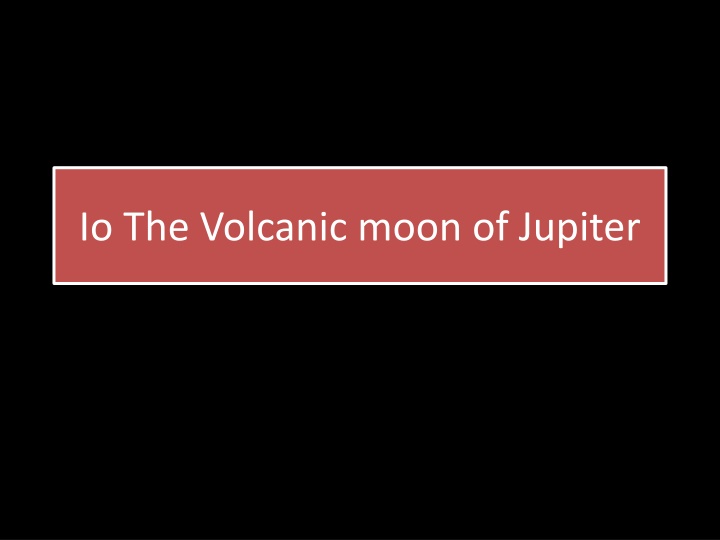

![Read⚡ebook✔[PDF] Io After Galileo: A New View of Jupiter's Volcanic Moon (Sprin](/thumb/21612/read-ebook-pdf-io-after-galileo-a-new-view-of-jupiter-s-volcanic-moon-sprin.jpg)
